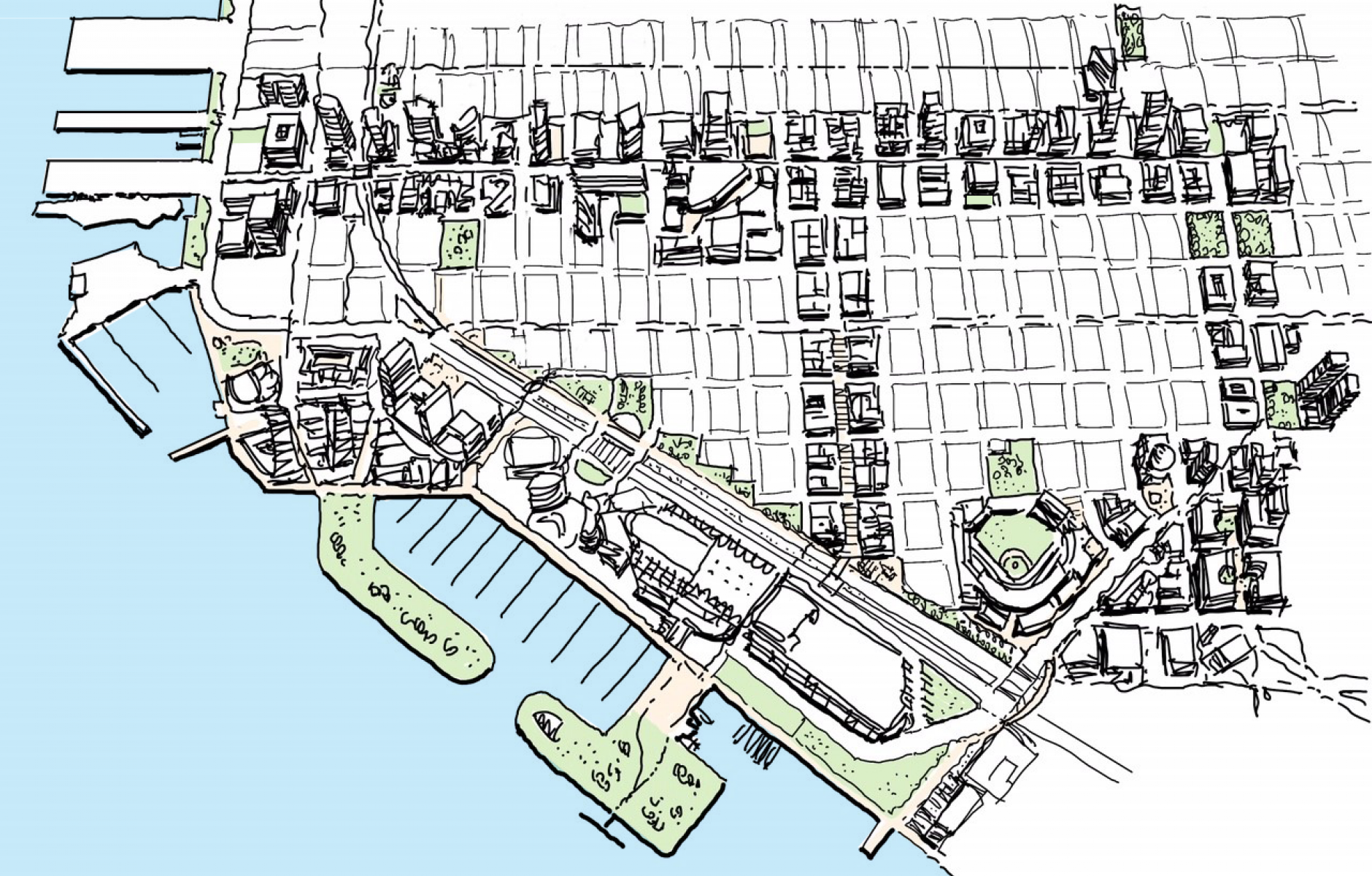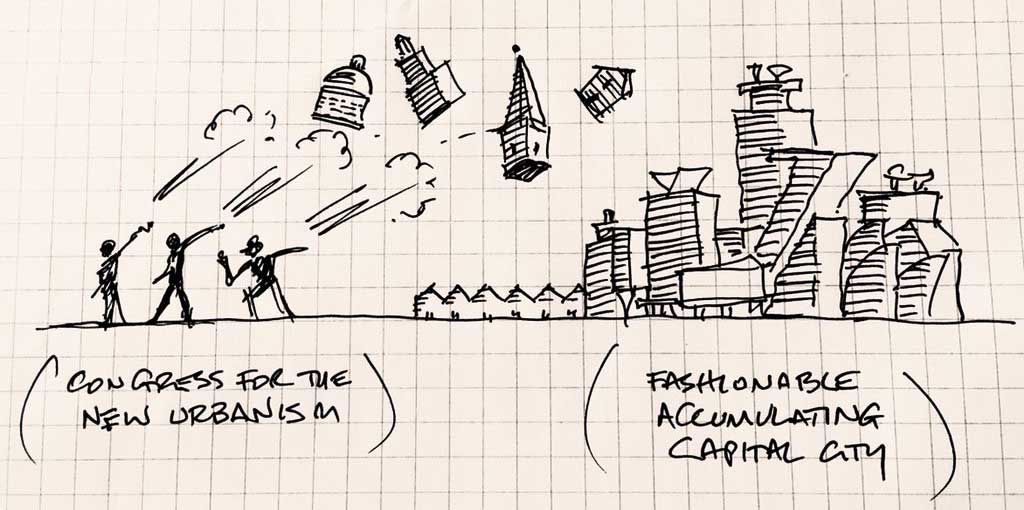
Objective design standards are form-based codes
California's long standing “Not-In-My-Backyard” (NIMBY) culture has exacerbated the problems of high housing costs and homelessness. Over the past 50 years, conventional zoning ordinances and entitlement processes have conspired to support NIMBY intentions to stop new housing from being built near existing homes. But six years ago, state legislators began passing laws to address California’s acute housing crisis.
These bills are removing local policy and regulatory impediments to more housing via Objective Design Standards (ODS) with Streamlined Permit Processing. The intent of ODS is to build more affordable and attainable housing along transit and strip commercial corridors that are ripe for redevelopment. The Congress for the New Urbanism (CNU) has been championing these two important issues for over 30 years.
The influential Charter for the New Urbanism had its roots in California, where many of CNU founders helped write the Ahwahnee Principles in 1991 (the principles were, essentially, a first draft of the Charter). Unfortunately, the state, like much of the nation as a whole, continued to promote sprawling development patterns for three more decades. And yet, with 39 million residents, California is often at the forefront of regulatory and cultural trends. The Golden State’s land use reforms could have an important impact beyond its borders.
Since 2017, CNU and California legislators agree that many of the barriers to building new urban housing are found in outdated zoning codes. Form-based codes (FBCs), developed by new urbanist practitioners in cooperation with cities and developers, are land use regulations that facilitate more predictable built outcomes, with explicit design standards that shape a community’s physical form. Both FBCs and the California’s mandated ODS are presented in clearly drawn diagrams and other visuals to show what is allowed without relying on the discretion of a city staff member and hearing bodies.
In 2003, Andres Duany and CNU-California Chapter members provided research that influenced Government Code section 65302.4, promoting the language and diagrams of form-based codes: “This tool achieves certainty over the physical outcome of land use and development decisions while enhancing flexibility to create more infill or infrastructure as needed. Cities in California that have used form-based codes, such as Ventura, Benicia, and Petaluma, provide examples of this practice.”

The state’s ODS language first appeared in SB 35 in 2017, in the Housing Accountability Act. California cities are now required to streamline new development reviews using ODS. These regulatory standards are the now the only basis for cities to deny eligible by-right housing and mixed-use projects.
The following series of state laws require ODS:
SB 2 Building Homes and Jobs Act (2017) provides technical assistance to help cities and counties prepare, adopt, and implement streamlined permit processes housing projects using Objective Design Standards (ODS). The California Department of Housing and Community Development, in coordination with the Governor’s Office of Planning and Research, developed this ODS toolkit to explain how these are more predictable and easier to interpret for all stakeholders, including decision makers, staff, applicants, and members of the public.
SB 35 Affordable Housing Streamlined Approval Process (2017) creates an opt-in program for developers that allows a streamlined ministerial approval process for developments in localities that have not yet made sufficient progress toward meeting their regional housing need allocation (RHNA). Eligible developments must include a specified level of affordability; be on an infill site; comply with existing residential and mixed-use general plan or zoning provisions; and comply with other requirements such as, locational and demolition restrictions. The streamlined, ministerial entitlement process relies on objective design standards.
SB 330 Housing Crisis Act (2019) require a housing development project to comply with objective, quantifiable, written development standards, conditions, and policies appropriate to, and consistent with, meeting the jurisdiction’s RHNA share.
SB 9 Housing Development (2021) requires ministerial approval of a housing development of no more than two units in a single-family zone (duplex), the subdivision of a parcel zoned for residential use into two parcels (lot split), or both. Authorizes a city or county to impose objective zoning, subdivision, and design review standards.
AB 2668 Planning and Zoning (2022) further amend SB 35 by removing perceived ambiguities in the law regarding the application process and the local review process. And when a local government determines that a development submitted pursuant to this section is consistent with its objective planning standards, it must approve the development.
SB 6 and AB 2011 (2022) rezones commercial areas on major boulevards for three-to-six story residential development that includes labor standards and health care requirements in a bid to improve conditions for construction workers and will go into effect July 1, 2023, until January 1, 2033. These require cities to enable a by-right, streamlined, ministerial approval process for multifamily housing with Affordable Housing developments located on commercial corridors using specified site criteria, objective design standards, and prevailing wage labor standards.
In December, 2022, the Form-Based Codes Institute at Smart Growth America announced that Bay Area design firm, Opticos, won the 16th annual FBCI Form-Based Code Award for the firm’s Objective Design and Development Standards in Marin County, California. The award jury selected these ODS regulations as a model form-based code. Marin County’s ODS/FBC implements Marin County's Countywide Plan through context-specific standards based on local development patterns.
Cities are responding to ODS requirements in several ways. Many are simply ignoring the requirement and awaiting future state enforcement. Others are taking their current subjective standards, striking out subjective language, and hoping for the best. Still others are using dedicated state funds to hire experienced California new urbanists to reform local zoning via FBC models, such as Marin County, Santa Barbara, Los Altos, and Carlsbad.
This ODS/FBC approach contrasts with conventional zoning’s focus on segregation of land uses, and the control of development intensity through abstract and suburban measurements (e.g., Floor Area Ratios, dwellings per acre, setbacks, and parking ratios), followed by a series of discretionary review permit processes, which historically has not provided enough housing and led to the state legislator’s intervention. In short, FBCs and ODS-explicit standards allow for faster permitting processes that are better regulatory tools to provide more housing on infill development-ready corridors. Let’s continue to reform California’s regulations to build more places that are transit-supported, walkable, sustainable, and enjoyable for everyone.
Find additional Objective Design Standards and Form-Based Code information here, here, and here.




